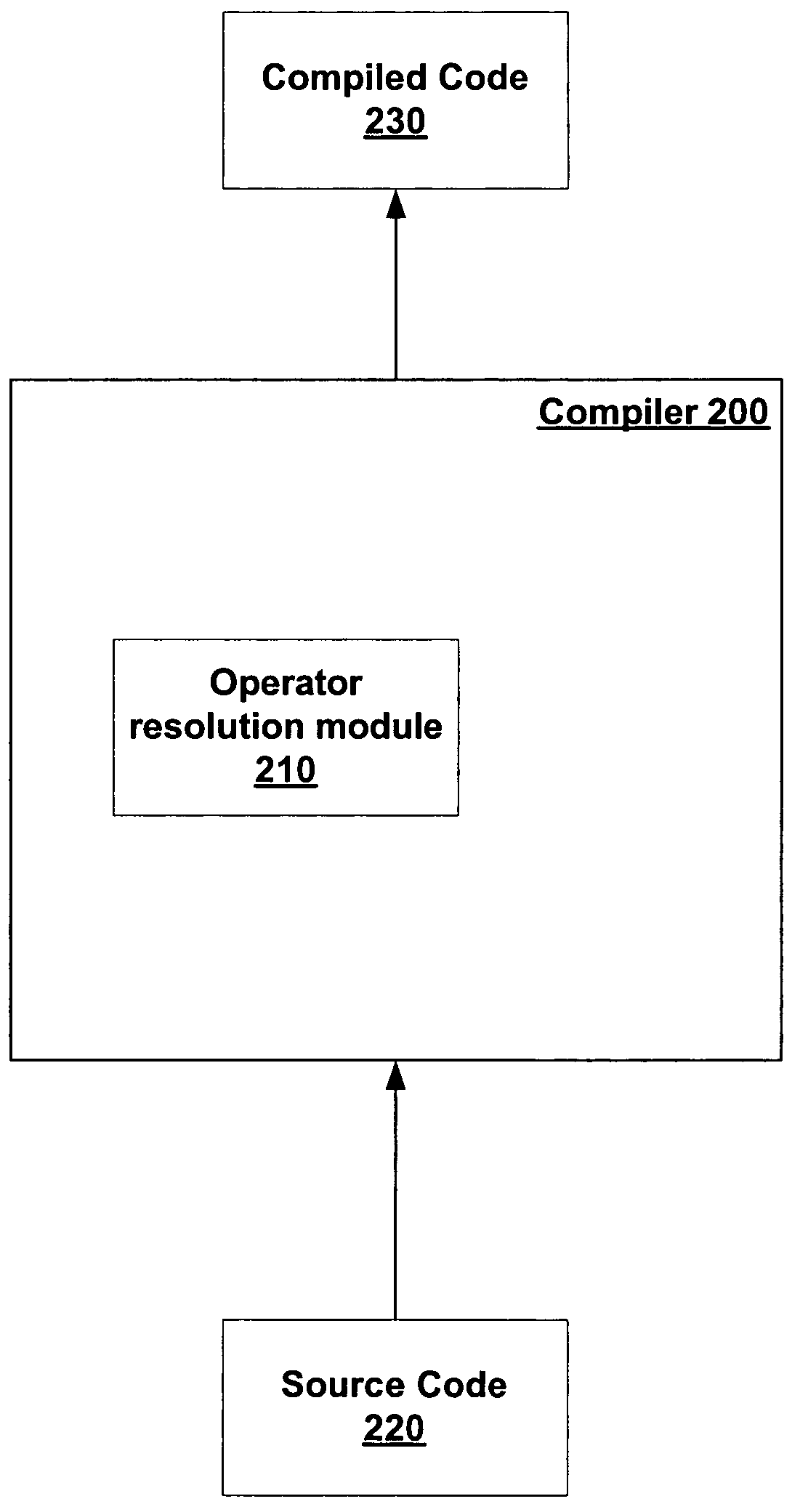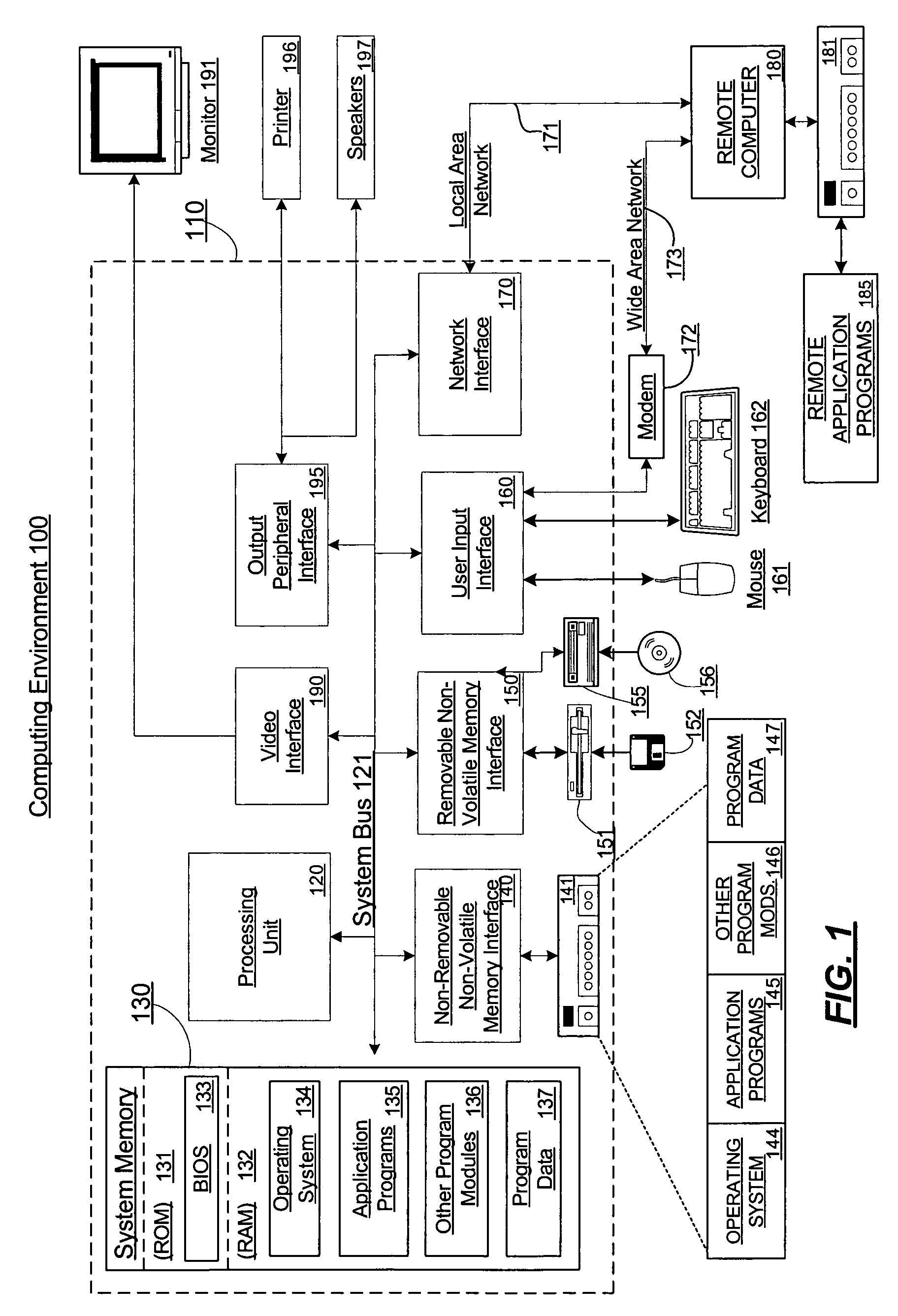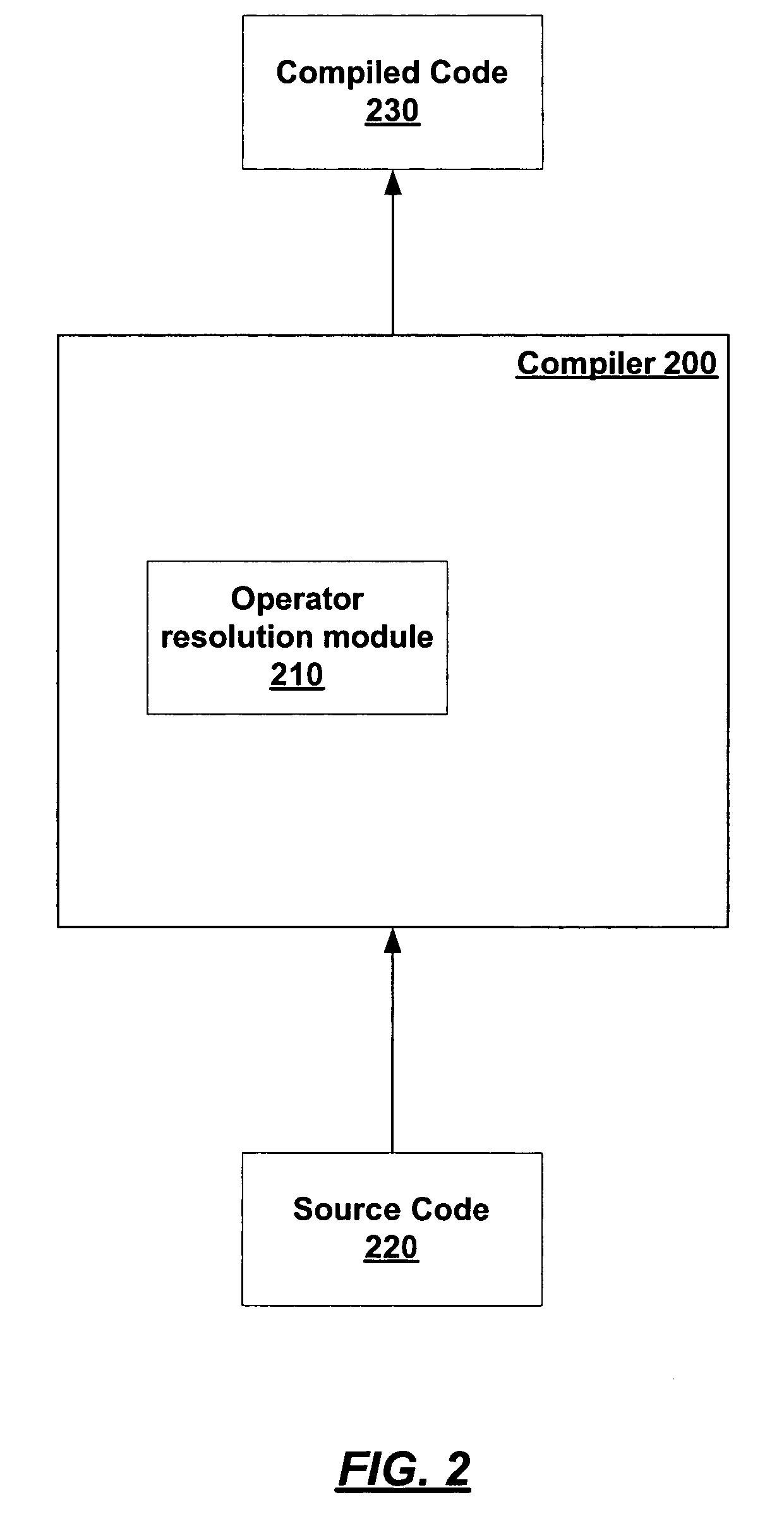Resolving operators with user defined operands
a technology of operator and operand, applied in the field of computing programs, can solve problems such as data loss, precision loss, and magnitude loss
- Summary
- Abstract
- Description
- Claims
- Application Information
AI Technical Summary
Benefits of technology
Problems solved by technology
Method used
Image
Examples
Embodiment Construction
Overview
[0037]In order to allow compilation of operators with user-defined operands, a compiler includes a resolution module which resolves the operator. Widening conversions of all operands are first examined, to see if any such widening conversions will result in types for which the operator is defined. If no types are found, narrowing and widening conversions of all operands are examined, to see if any conversions result in types for which the operator is defined. A target type is selected from the possible result types.
Exemplary Computing Arrangement
[0038]FIG. 1 shows an exemplary computing environment in which aspects of the invention may be implemented. The computing system environment 100 is only one example of a suitable computing environment and is not intended to suggest any limitation as to the scope of use or functionality of the invention. Neither should the computing environment 100 be interpreted as having any dependency or requirement relating to any one or combinati...
PUM
 Login to View More
Login to View More Abstract
Description
Claims
Application Information
 Login to View More
Login to View More - R&D
- Intellectual Property
- Life Sciences
- Materials
- Tech Scout
- Unparalleled Data Quality
- Higher Quality Content
- 60% Fewer Hallucinations
Browse by: Latest US Patents, China's latest patents, Technical Efficacy Thesaurus, Application Domain, Technology Topic, Popular Technical Reports.
© 2025 PatSnap. All rights reserved.Legal|Privacy policy|Modern Slavery Act Transparency Statement|Sitemap|About US| Contact US: help@patsnap.com



